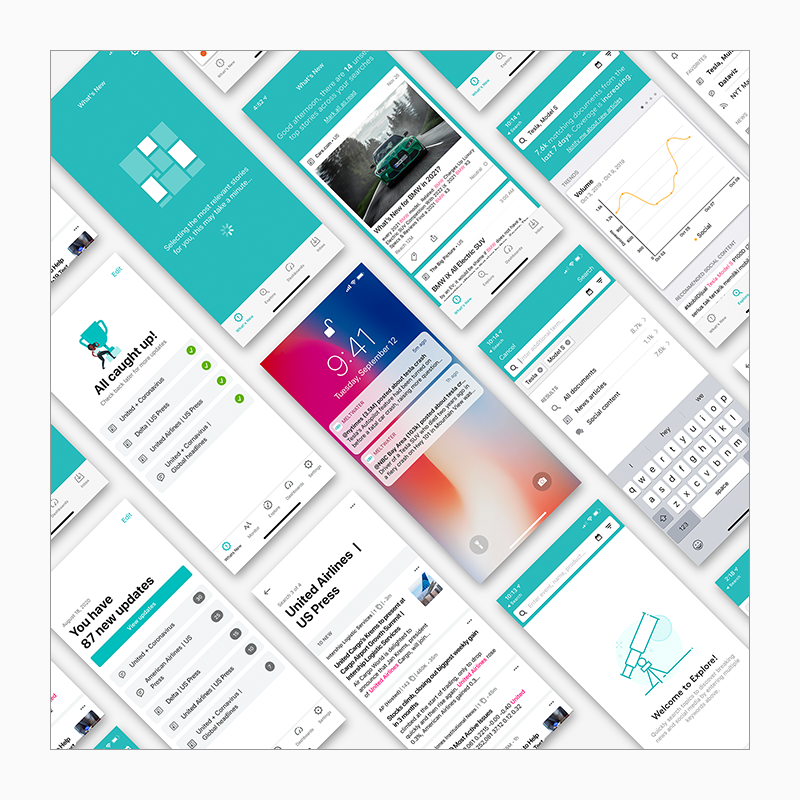Product Design Work
Media Search & Analytics
Design of an enterprise SaaS search application with realtime analytics across news and social media.
AI-driven Insights
User experience design for a developer platform and an AI-driven insights product.
Meltwater Mobile App
Native mobile app focused on providing customers with Meltwater’s core offering, on-the-go.
Flux Design System
A framework-agnostic design system based on Google’s Material Design.
Design Philosophy
I believe the most important role of design is to help companies see. Design can envision multiple future scenarios far faster than an engineering team can build it. This often includes ideas that are abandoned once people see the issues. Design can be used to understand user needs and values. Of course a good design team is also responsible for the smallest details. Like agile development, design works best when teams iterate on solutions and test with users. Business success involves many other actions but, used correctly, design helps companies see the path to getting there.
Connect design to business
One of my core strengths is building connections. Almost every design decision is also a business decision. whether they be between people, products or technology. Leading design means connecting designers to a problem they haven't seen or a business goal that can be impacted by their design decisions.
“I’m a functionalist troubled by aesthetics"
That is a quote from Wim Crouwel, the Dutch Typographer that resonated with me. My design approach has always been rooted in a functional mindset. But I've seen many a good idea fail because the aesthetics were just not there, including my own work. I think it’s important to start messy… to sketch or whiteboard rough ideas with stakeholders. It’s important to wireframe ideas before creating detailed mockups. But this doesn’t mean that strong visual design isn’t critical. People will describe a car purchase in practical terms but car makers know, it is primarily an emotional decision driven by a car’s look and feel. Aesthetics and function are both critical to success in design.
Don’t get "too close to the metal"
Many years ago while working at Sony, I got a call from Gong Szeto, a consultant we were working with. He was frustrated with some of the technical requirements. "You're too close to the metal" he said. It was a reference was to being too deep in the technology to see the user. It was getting in the way of solving the user's problems. This comment has stayed with me ever since. In product design, it's important to know how things are built and to be able to communicate with engineers but it's also important to see the world from the user's perspective. Most users are unaware of technical limitations and want it to “just work”.
Be grateful
Very few designers list pay as their primary motivator. Most of us want to have impact and be part of a mission they believe in. Tight deadlines and questionable requests can sometimes test the limits. So its important to celebrate the wins along the way. The whole team should know when a successful product launch happens or when a designer went above and beyond. I believe it is core to what motivates designers and design teams to do their best. It’s also good to reflect at the end of the year what we accomplished and what the standout achievements were. It’s also an opportunity to have a bit of fun and celebrate the quirks of the team.
I also think it is important to express gratitude directly and sincerely. Most of the time, this happens in a 1:1 meeting or in a group call. I also write handwritten notes. The importance of a thoughtful note was a lesson from design school that stayed with me. A simple sketch or a simple note can have impact. in arSince I've always sketched freehand, much of it was just an extension of that. I wrote them expecting they would be discarded but have been surprised to see my team save these notes for months if not years. It has shown me the value of a simple thank you.




